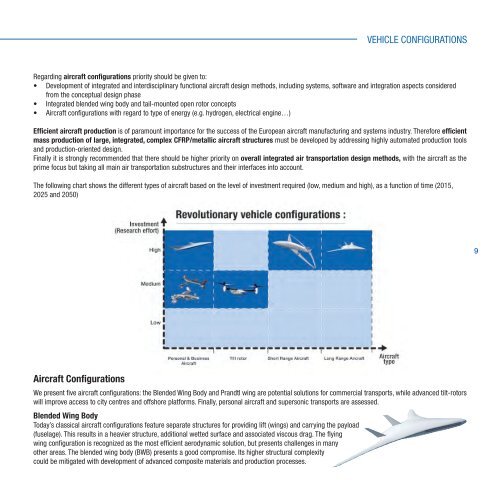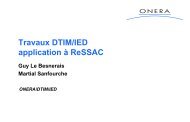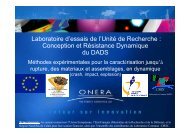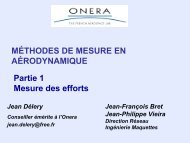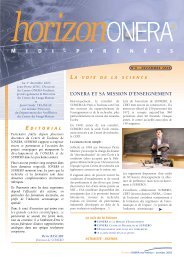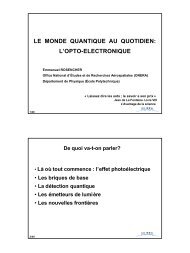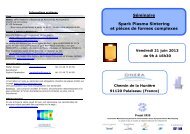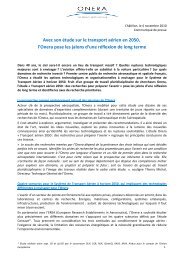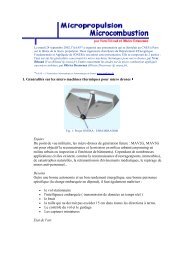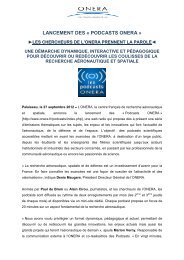From Air Transport System 2050 Vision to Planning for ... - Onera
From Air Transport System 2050 Vision to Planning for ... - Onera
From Air Transport System 2050 Vision to Planning for ... - Onera
Create successful ePaper yourself
Turn your PDF publications into a flip-book with our unique Google optimized e-Paper software.
VEHICLE CONFIGURATIONS<br />
Regarding aircraft configurations priority should be given <strong>to</strong>:<br />
• Development of integrated and interdisciplinary functional aircraft design methods, including systems, software and integration aspects considered<br />
from the conceptual design phase<br />
• Integrated blended wing body and tail-mounted open ro<strong>to</strong>r concepts<br />
• <strong>Air</strong>craft configurations with regard <strong>to</strong> type of energy (e.g. hydrogen, electrical engine…)<br />
Efficient aircraft production is of paramount importance <strong>for</strong> the success of the European aircraft manufacturing and systems industry. There<strong>for</strong>e efficient<br />
mass production of large, integrated, complex CFRP/metallic aircraft structures must be developed by addressing highly au<strong>to</strong>mated production <strong>to</strong>ols<br />
and production-oriented design.<br />
Finally it is strongly recommended that there should be higher priority on overall integrated air transportation design methods, with the aircraft as the<br />
prime focus but taking all main air transportation substructures and their interfaces in<strong>to</strong> account.<br />
The following chart shows the different types of aircraft based on the level of investment required (low, medium and high), as a function of time (2015,<br />
2025 and <strong>2050</strong>)<br />
9<br />
<strong>Air</strong>craft Configurations<br />
We present five aircraft configurations: the Blended Wing Body and Prandtl wing are potential solutions <strong>for</strong> commercial transports, while advanced tilt-ro<strong>to</strong>rs<br />
will improve access <strong>to</strong> city centres and offshore plat<strong>for</strong>ms. Finally, personal aircraft and supersonic transports are assessed.<br />
Blended Wing Body<br />
Today’s classical aircraft configurations feature separate structures <strong>for</strong> providing lift (wings) and carrying the payload<br />
(fuselage). This results in a heavier structure, additional wetted surface and associated viscous drag. The flying<br />
wing configuration is recognized as the most efficient aerodynamic solution, but presents challenges in many<br />
other areas. The blended wing body (BWB) presents a good compromise. Its higher structural complexity<br />
could be mitigated with development of advanced composite materials and production processes.


